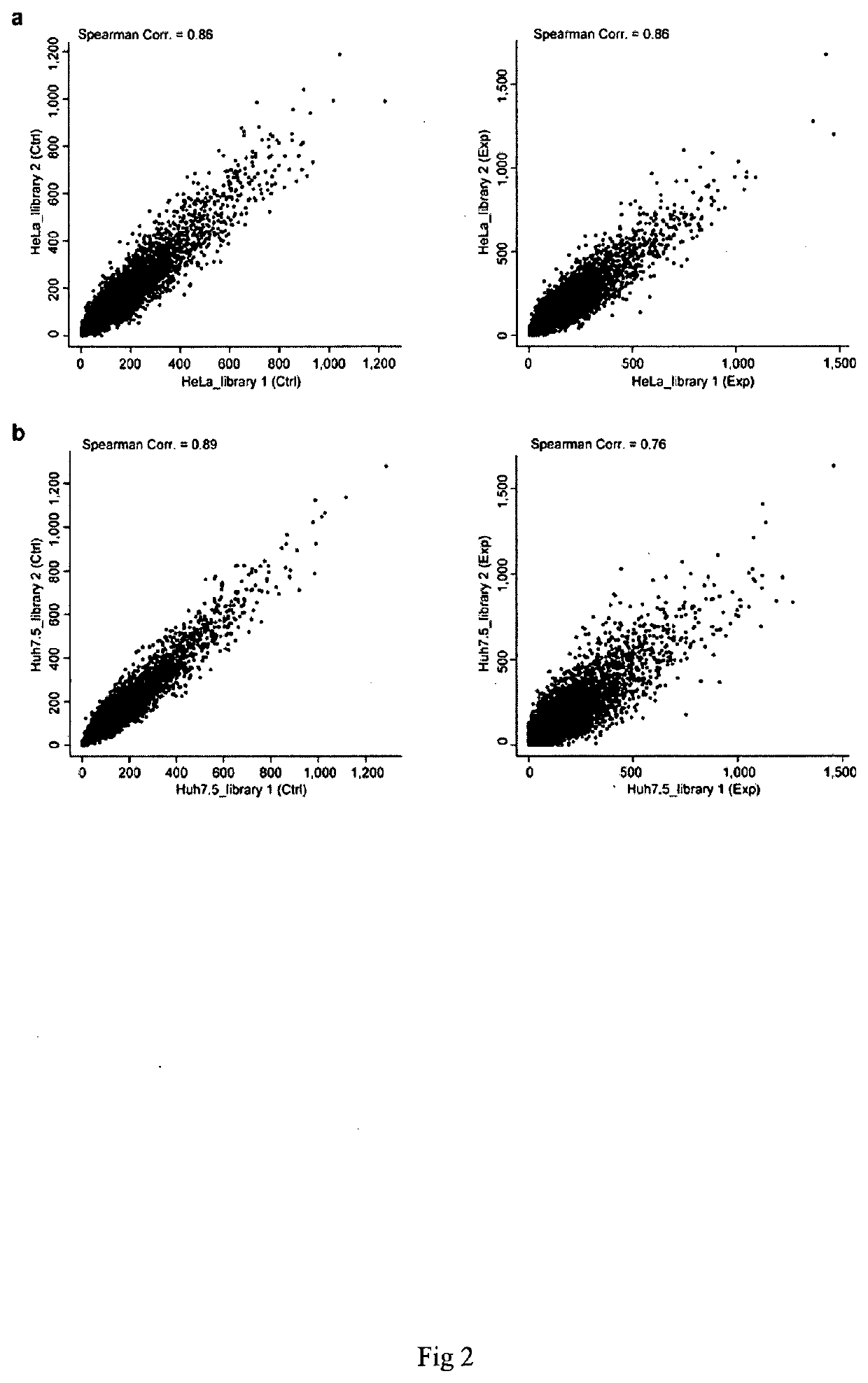Method for screening and identifying functional lncrnas
a functional and non-coding technology, applied in the field of genetic perturbation of long non-coding rnas, can solve the problems of large-scale mention, difficult to apply the crispr-cas9 system in a conventional way to disrupt their expression, and largely unknown functions of the virus/bacteriophag
- Summary
- Abstract
- Description
- Claims
- Application Information
AI Technical Summary
Benefits of technology
Problems solved by technology
Method used
Image
Examples
example
Materials and Methods
1. Cells and Reagents
[0092]The HeLa cell line was from Z. Jiang's laboratory (Peking University) and cultured in Dulbecco's modified Eagle's medium (DMEM, Gibco C11995500BT). Huh 7.5 cell line from S. Cohen's laboratory (Stanford University School of Medicine) was cultured in DMEM (Gibco) supplemented with 1% MEM non-essential amino acids (NEAA, Gibco 1140-050). K562 cell from H. Wu's laboratory (Peking University) and GM12878 cell from Coriell Cell Repositories were cultured in RPMI1640 medium (Gibco 11875-093). All cells were supplemented with 10% fetal bovine serum (FBS, CellMax BL102-02) with 1% penicillin / streptomycin, cultured with 5% CO2 in 37° C.
2. Reverse Transcription PCR (RT-PCR) for Testing Intron Retention or Exon Skipping
[0093]The sgRNAs were cloned into a lentiviral expression vector carrying a CMV promoter-driven mCherry marker, then transduced into HeLaoc cells1-4 through viral infection at an MOI of <1. 72 hrs post infection, the mCherry positi...
PUM
| Property | Measurement | Unit |
|---|---|---|
| size | aaaaa | aaaaa |
| length | aaaaa | aaaaa |
| heterogeneous | aaaaa | aaaaa |
Abstract
Description
Claims
Application Information
 Login to View More
Login to View More - R&D
- Intellectual Property
- Life Sciences
- Materials
- Tech Scout
- Unparalleled Data Quality
- Higher Quality Content
- 60% Fewer Hallucinations
Browse by: Latest US Patents, China's latest patents, Technical Efficacy Thesaurus, Application Domain, Technology Topic, Popular Technical Reports.
© 2025 PatSnap. All rights reserved.Legal|Privacy policy|Modern Slavery Act Transparency Statement|Sitemap|About US| Contact US: help@patsnap.com



